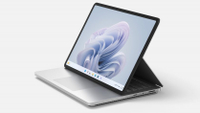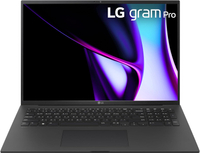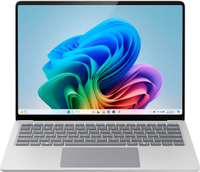The best Windows laptops in 2025: our top picks
I think these are the best Windows laptops you can buy right now
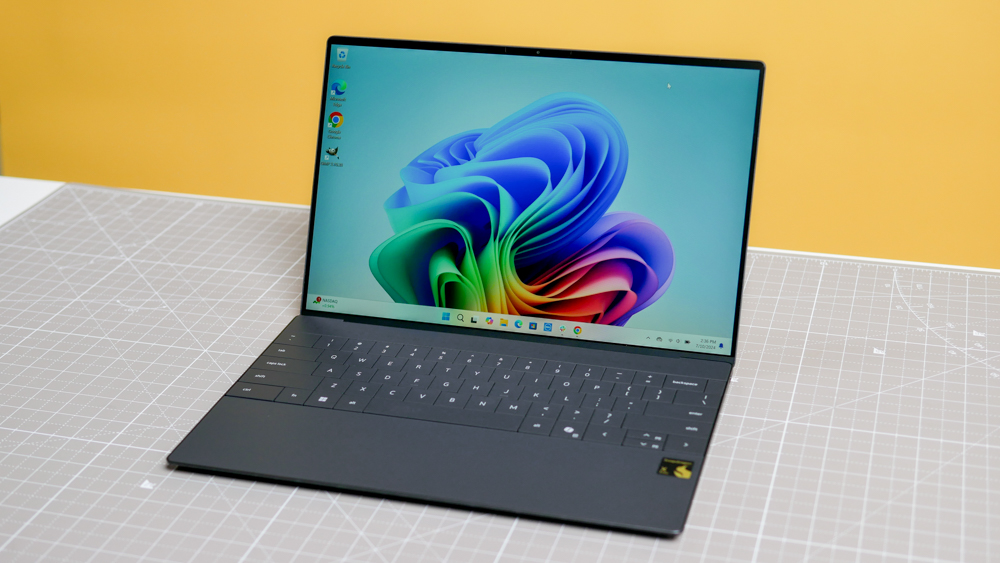
The best Windows laptops are as good as the best MacBooks these days thanks to a wave of new laptop chips that have catapulted them to new heights of speed and battery life.
I know because I've been using Windows laptops since I was a kid in the '90s, so I remember the bad old days of Windows. But Windows remains one of the most common and versatile laptop operating systems on the planet, and my team and I review dozens of different Windows laptops from the likes of Dell, HP, Lenovo and more every year.
That's why I often recommend the Dell XPS 13 as the best Windows laptop overall. I'm a little old-school so it took me some time to get used to using the XPS 13's capacitive function keys and invisible touchpad, but it's hard to beat the speed and battery life this superlight ultraportable gains from Qualcomm's Snapdragon X chips.
But if the price of the XPS is too high I highly recommend the Acer Aspire Go 15 as a budget alternative, because it gives you a full Windows laptop for under $500. For those seeking something more powerful for gaming, I recommend the Asus ROG Zephyrus G14 because it runs most games great and doubles as a productivity laptop in a pinch.
Read on for more recommendations backed up by our own in-house lab testing, which these are the best Windows laptops you can buy, and you can read our full review of each machine to help you make a smarter buying decision. Be sure to return to this page as we'll update it with some of the best laptops announced at CES 2025.
The quick list
In a hurry? Here's a brief overview of the laptops on this list, along with quick links that let you jump down the page directly to a review of whichever laptop catches your eye.
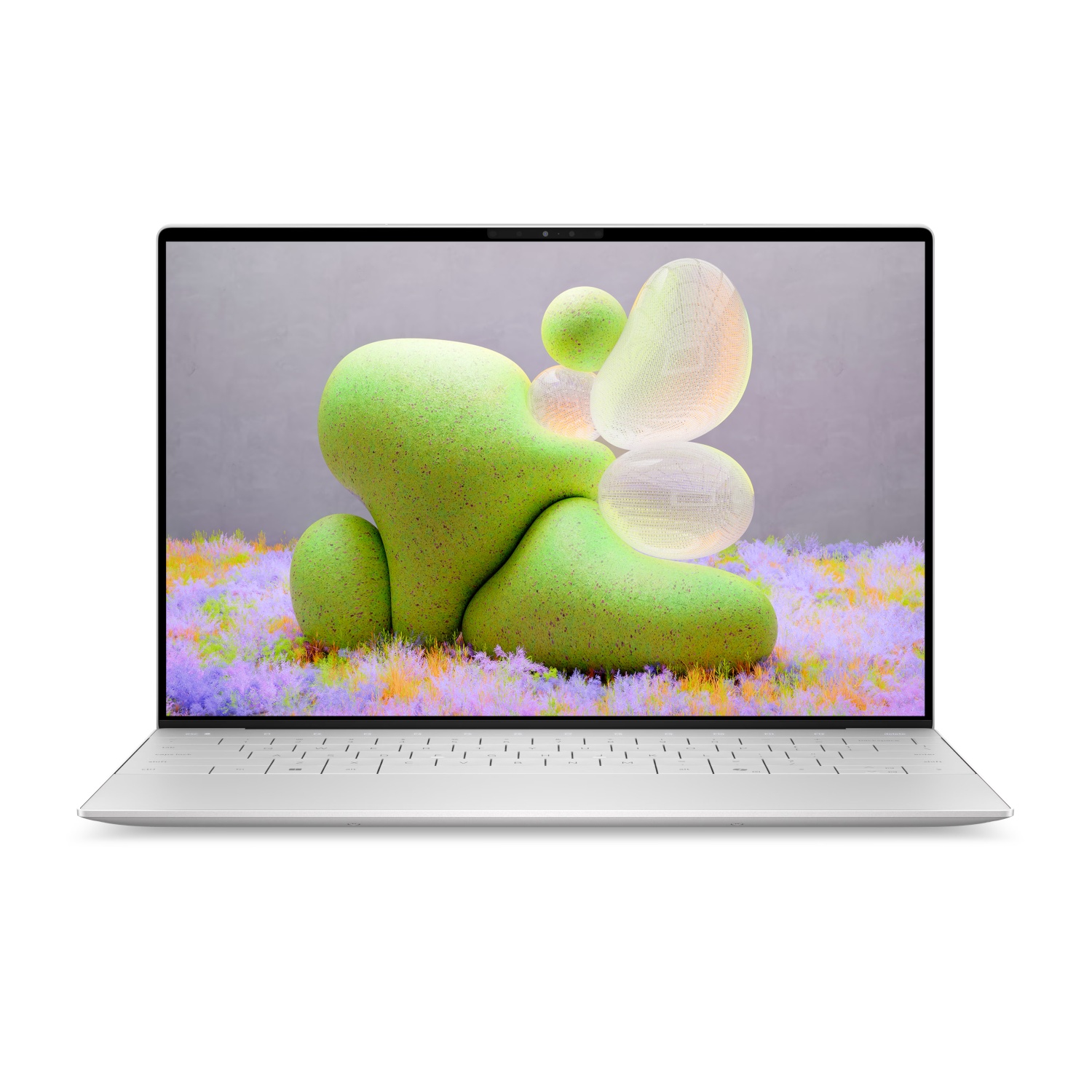
I recommend the Dell XPS 13 (2024) as our top pick for best Windows laptop now that this svelte ultraportable has the power of Snapdragon X chips inside, which give this portable powerhouse killer speed and MacBook-beating battery life.
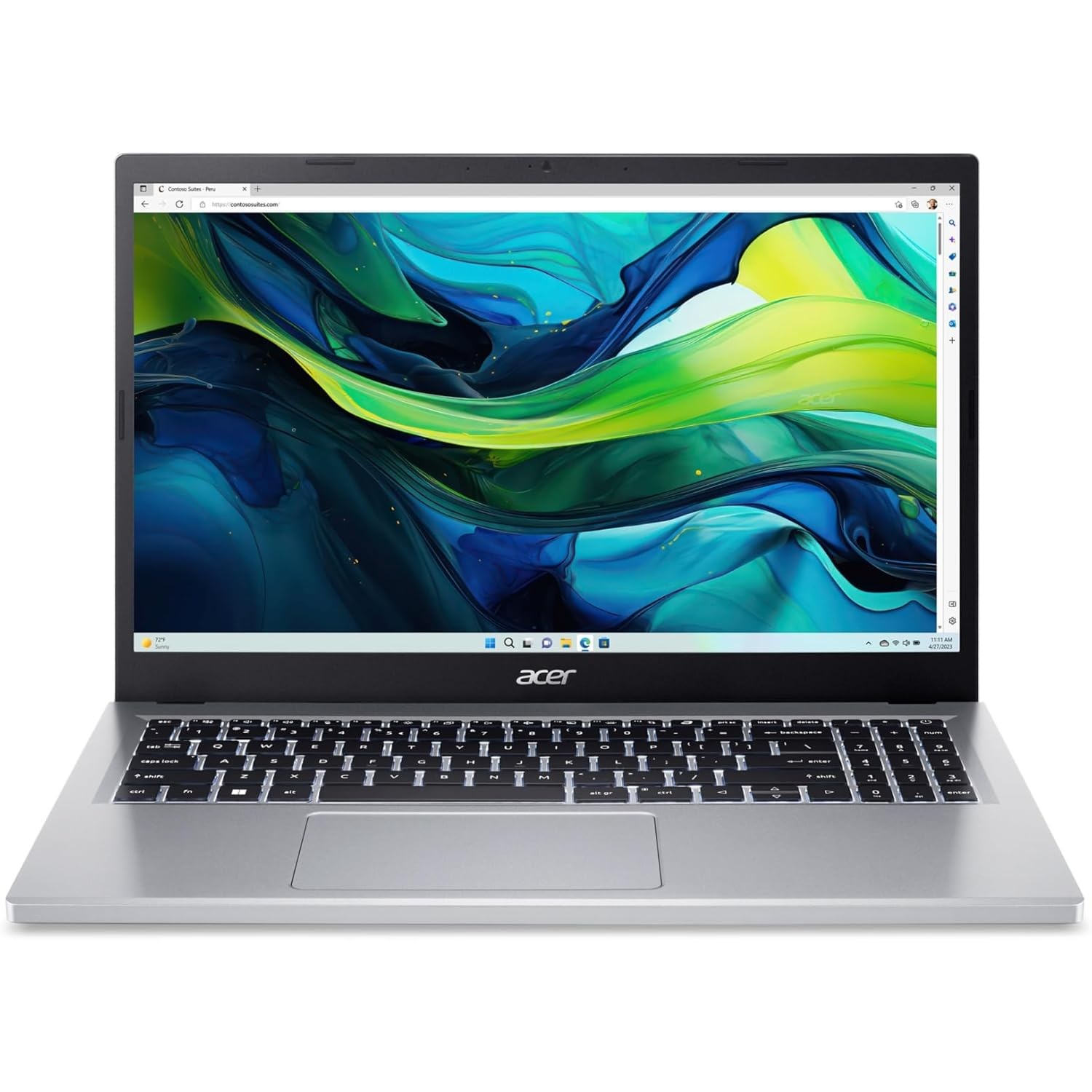
I like the Acer Aspire Go 15 and it's a great Windows laptop for those on a tight budget since it delivers a solid 1080p display, a comfy keyboard and good battery life for $300. It's not fast or powerful, but it's fine for writing papers or web surfing.
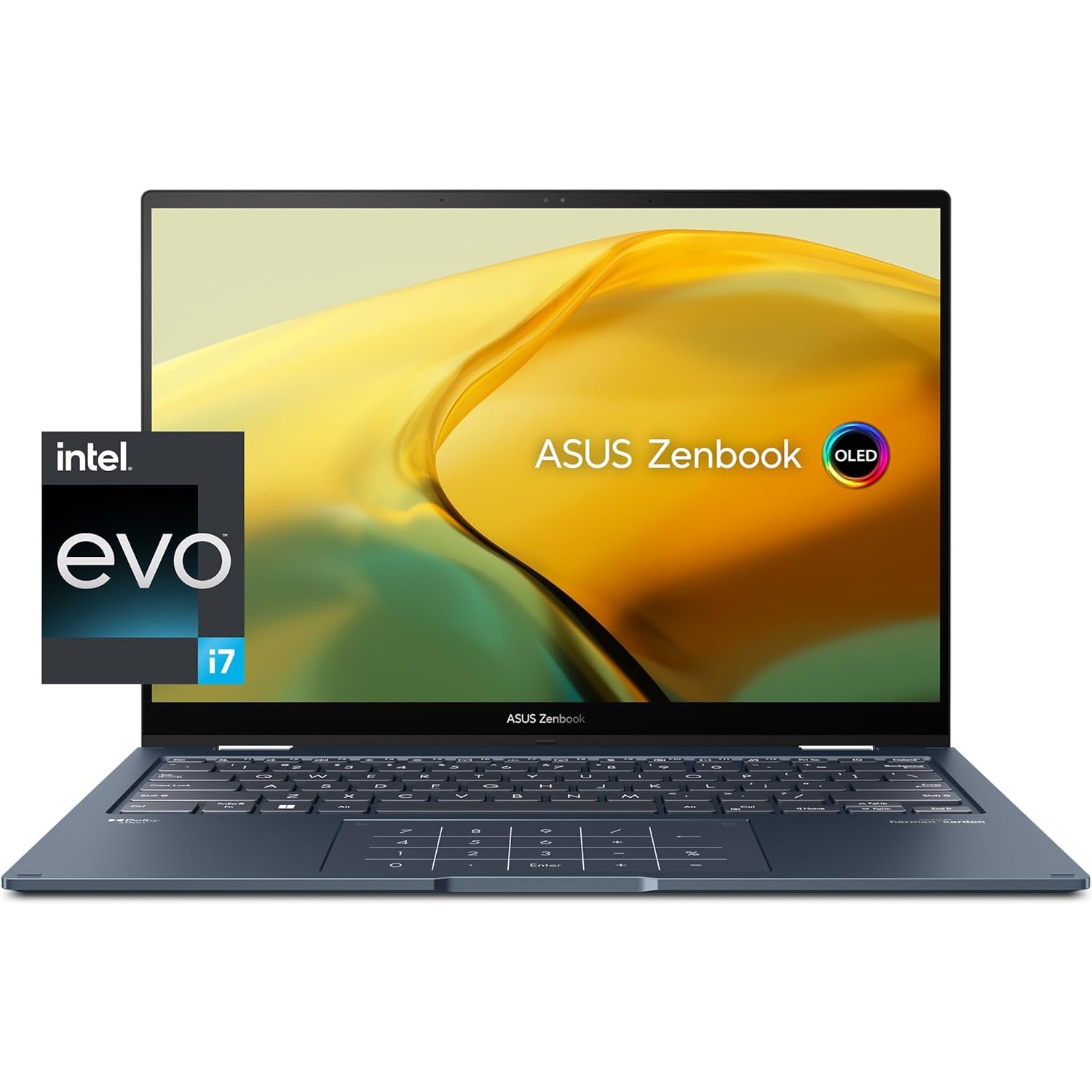
The Asus Zenbook 14 Flip OLED is one of the best 2-in-1 laptops if you love Windows 11 because it looks and feels great, offers lots of ports, enough power for work or play and a lovely 2.8K OLED panel. The webcam isn't amazing, but it's good enough!
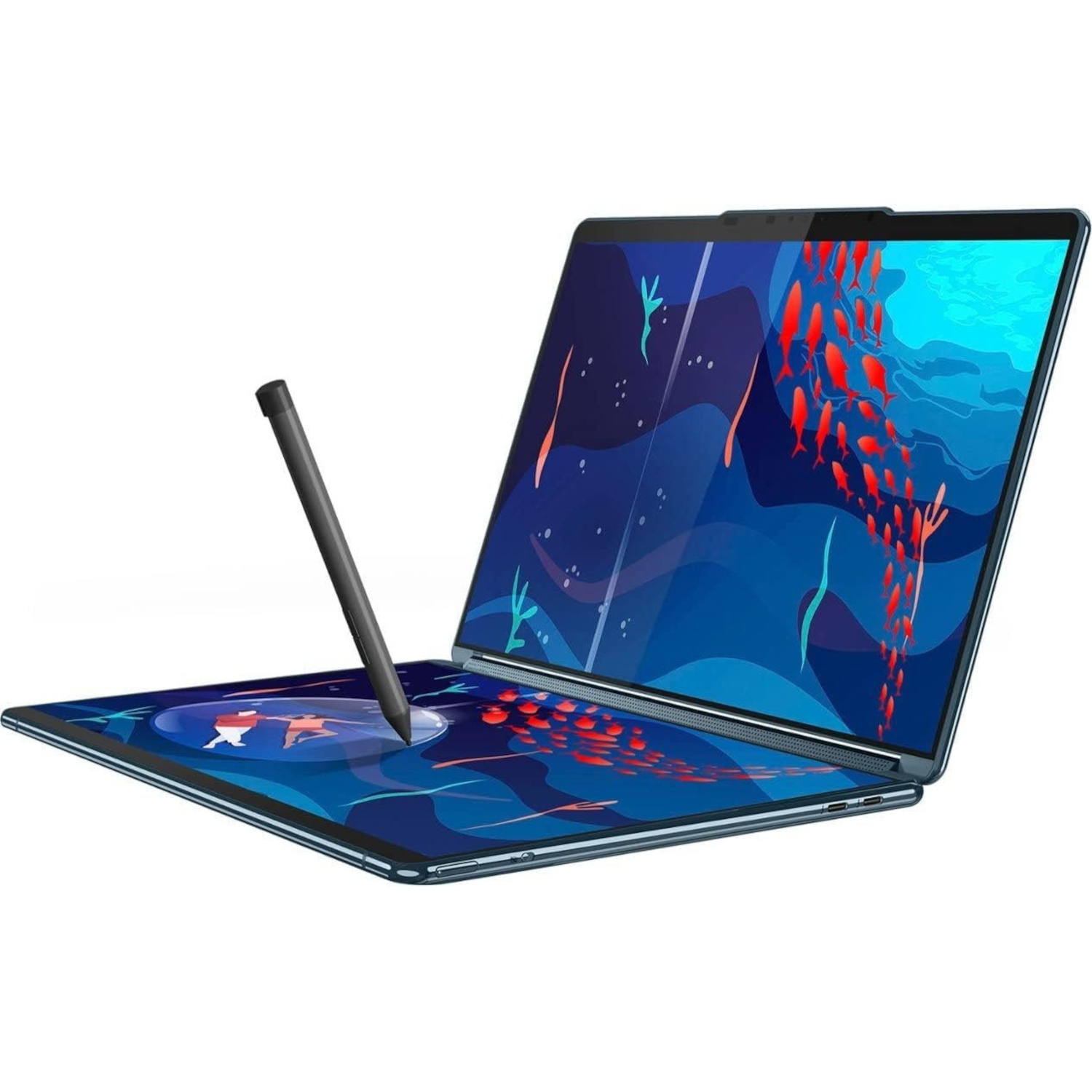
It took me time to get to grips with, but the Yoga Book 9i is a compelling alternative to foldable screen laptops because you get two 13-inch displays in one package. There are some clever software gestures and multitasking features here, too.
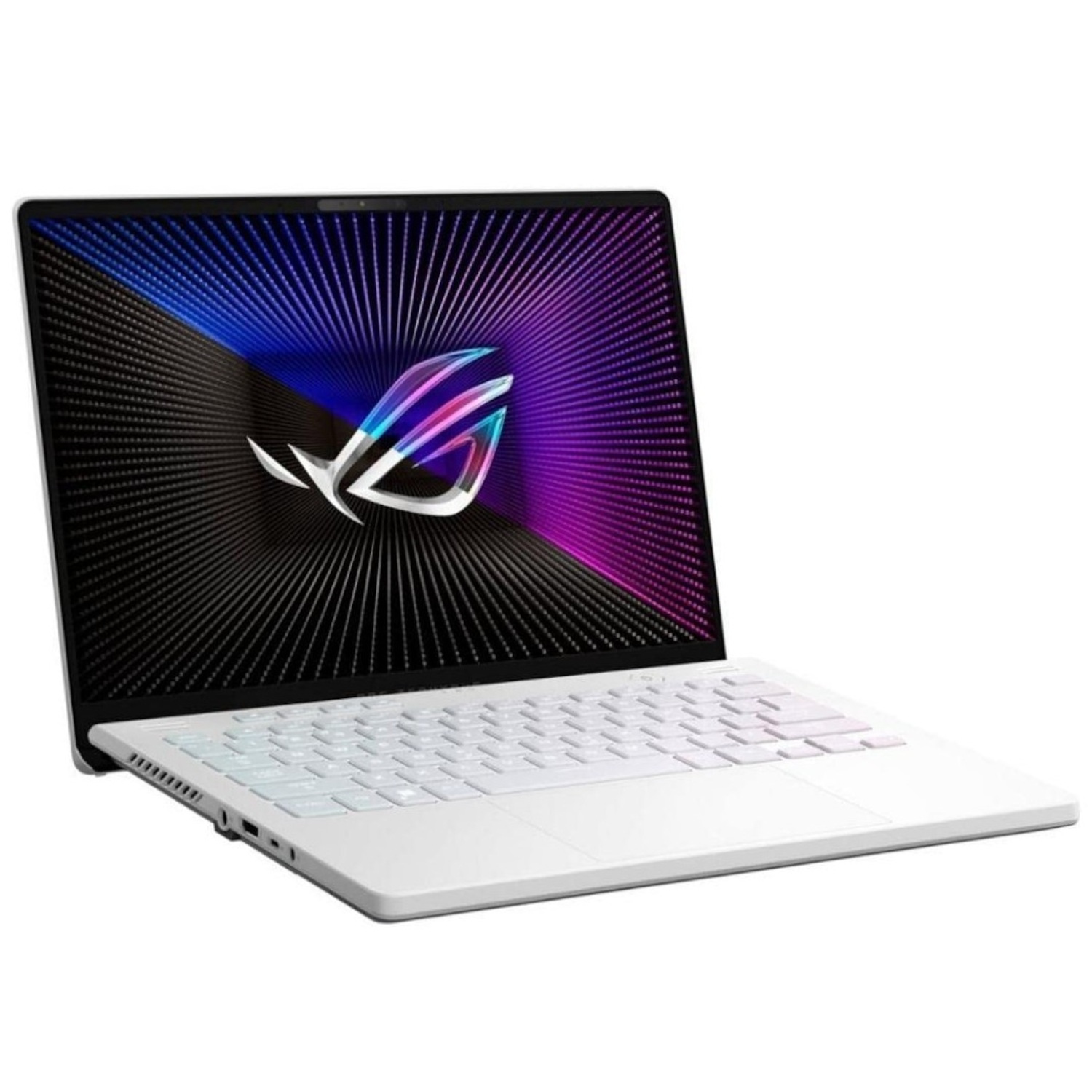
While not the fastest or biggest gaming laptop around, I love the Asus Zephyrus G14 because it can run most games at solid framerates, giving you enough power to get work done in a pinch in an elegant ultraportable design.
Read more below
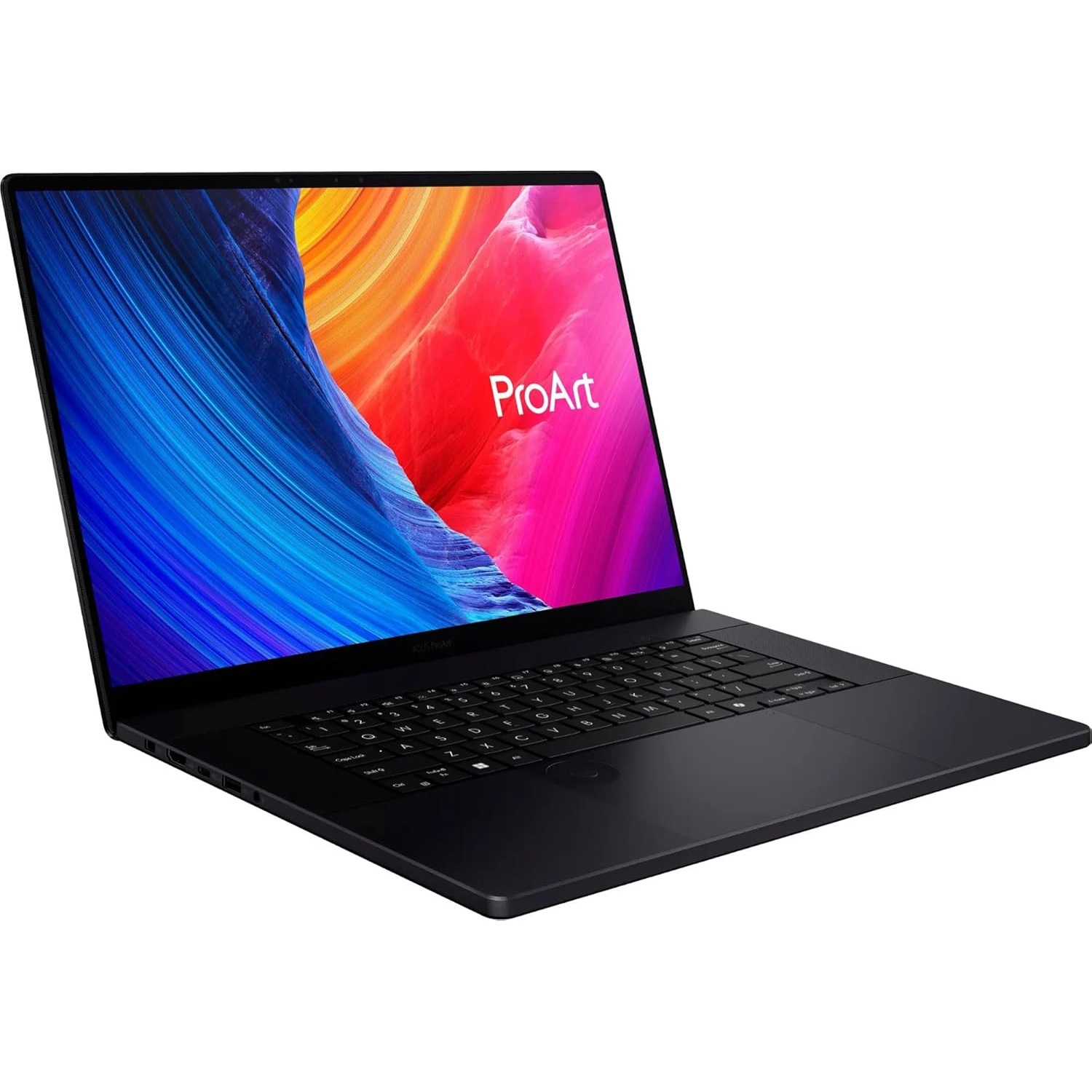
The Asus ProArt P16 stands heads and shoulders above the rest as the best for creators — packing the latest AMD power alongside RTX 4070 graphics, a gorgeous 4K OLED touchscreen panel, and a thoughtful aesthetic with ergonomics that keep you in your creative flow.
Load the next 3 products...

This Dell XPS 13 differs from the one listed above for two reasons: its Lunar Lake CPU and its gorgeous OLED display. Though its battery life isn’t the greatest and some design elements are off-putting, its astonishing display, solid performance and ultraportable design make up for its flaws.
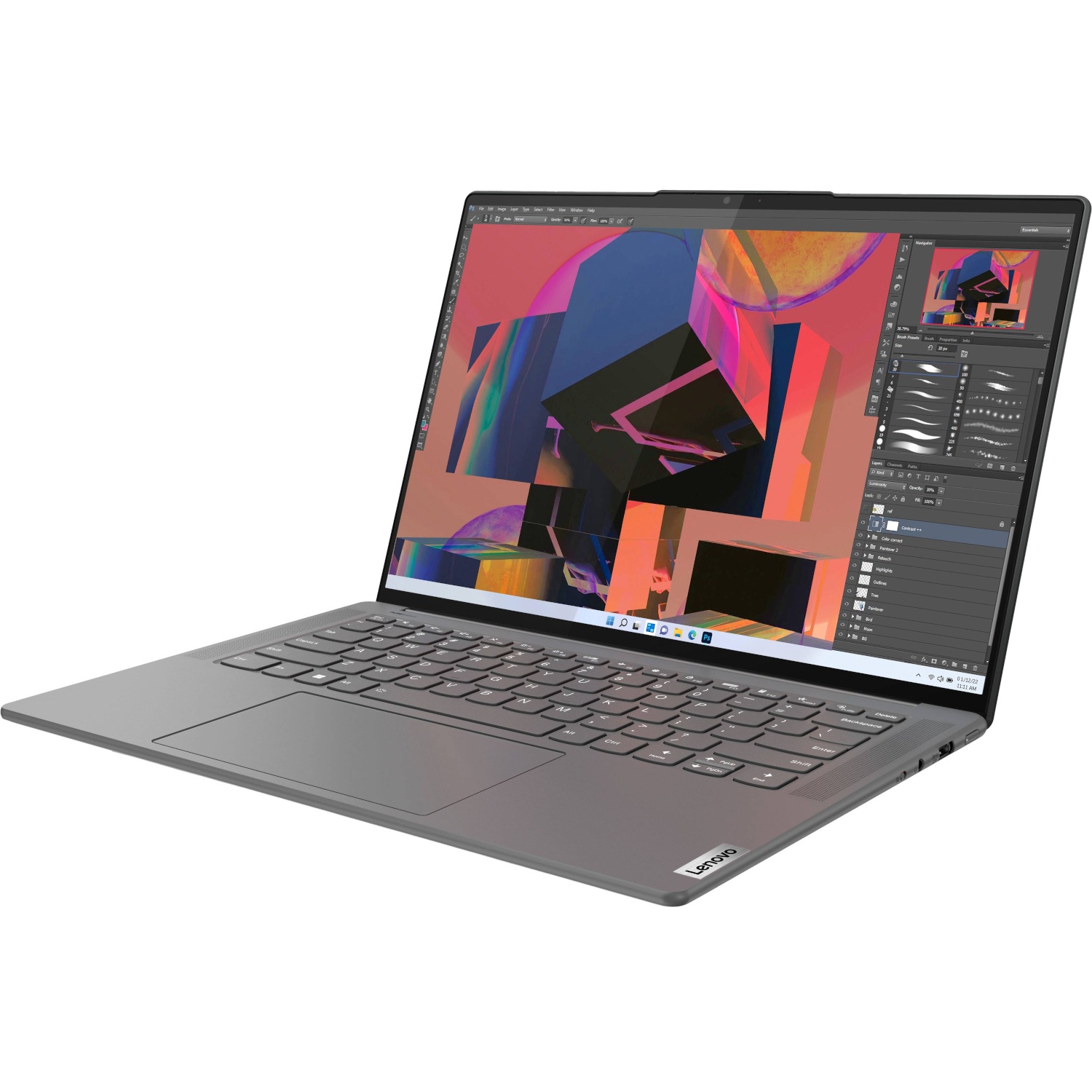
The Lenovo Slim 7 is the Windows laptop I recommend most for business use because it's easy to carry and gives you a lovely 14-inch OLED touchscreen, 10+ hours of tested battery life and a laptop that's comfy to type on for a great price.
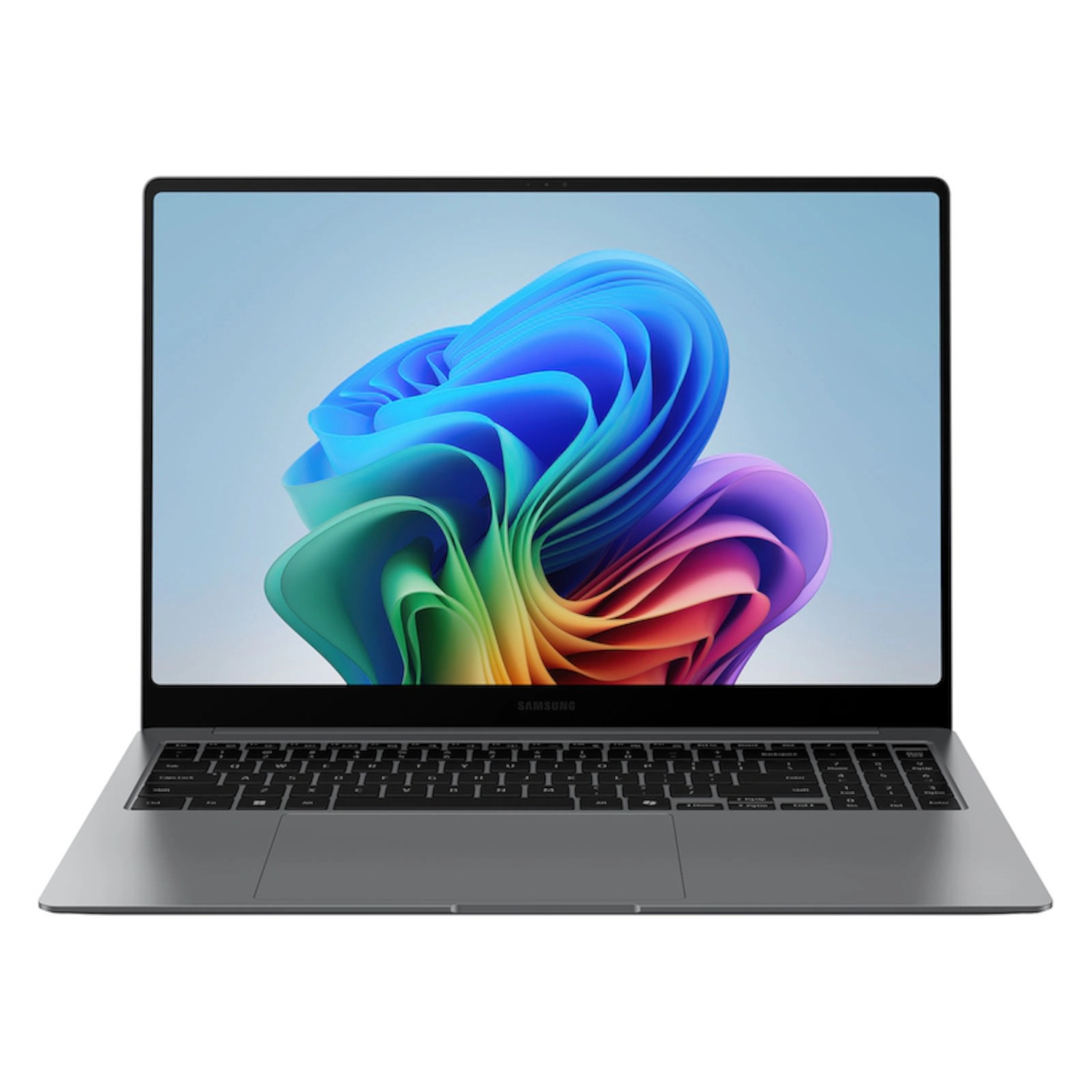
The Samsung Galaxy Book 5 Pro is a svelte laptop featuring a gorgeous 16-inch OLED display, fast Intel Lunar Lake performance and a spacious keyboard. Though its AI capabilities aren’t anything special and it has too many superfluous Samsung apps, the Galaxy Book 5 Pro is still an overall excellent laptop for work and play.

Tony is a senior staff writer at Tom’s Guide covering everything in the computing world. As a lifelong Windows user, Tony is always seeking the best Windows laptops to recommend to people, especially for those who want an alternative to MacBooks.
The best Windows laptops you can buy right now
Why you can trust Tom's Guide
The best Windows laptop overall
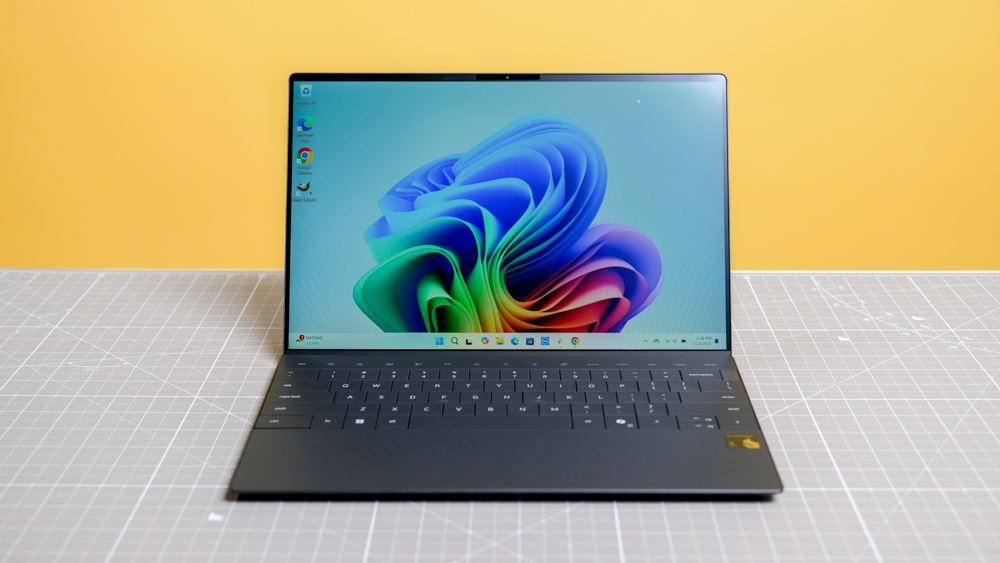

Specifications
Reasons to buy
Reasons to avoid
I have an easy time recommending the Dell XPS 13 as the best Windows laptop for most folks because it sports the same sleek, attractive design that the XPS line has had for years. But unlike prior models, the latest Dell XPS 13 can be had with Qualcomm's Snapdragon X chips inside, and these models deliver excellent performance and insanely long battery life (nearly 20 hours in our testing).
Even if you get a model with Intel chips you can look forward to a premium Windows laptop experience thanks to the XPS 13's thin, nearly bezel-less 1200p display and eye-catching design. I had a hard time getting used to using the capacitive touch keys and the invisible touchpad, but once you get the hang of it there's nothing to it.
While you don't get a ton of ports, this svelte 13-incher is lean and mean and comes with USB-C ports you can use to connect external peripherals. It's basically a MacBook Air competitor, and if you can afford the cost I think it's one of the best Windows laptops you can get for getting work done on the go.
For all these reasons and more, this is the Windows laptop we recommend most often to those in the market for a new notebook for work, school or play.
Read our full Dell XPS 13 (2024).
The best value
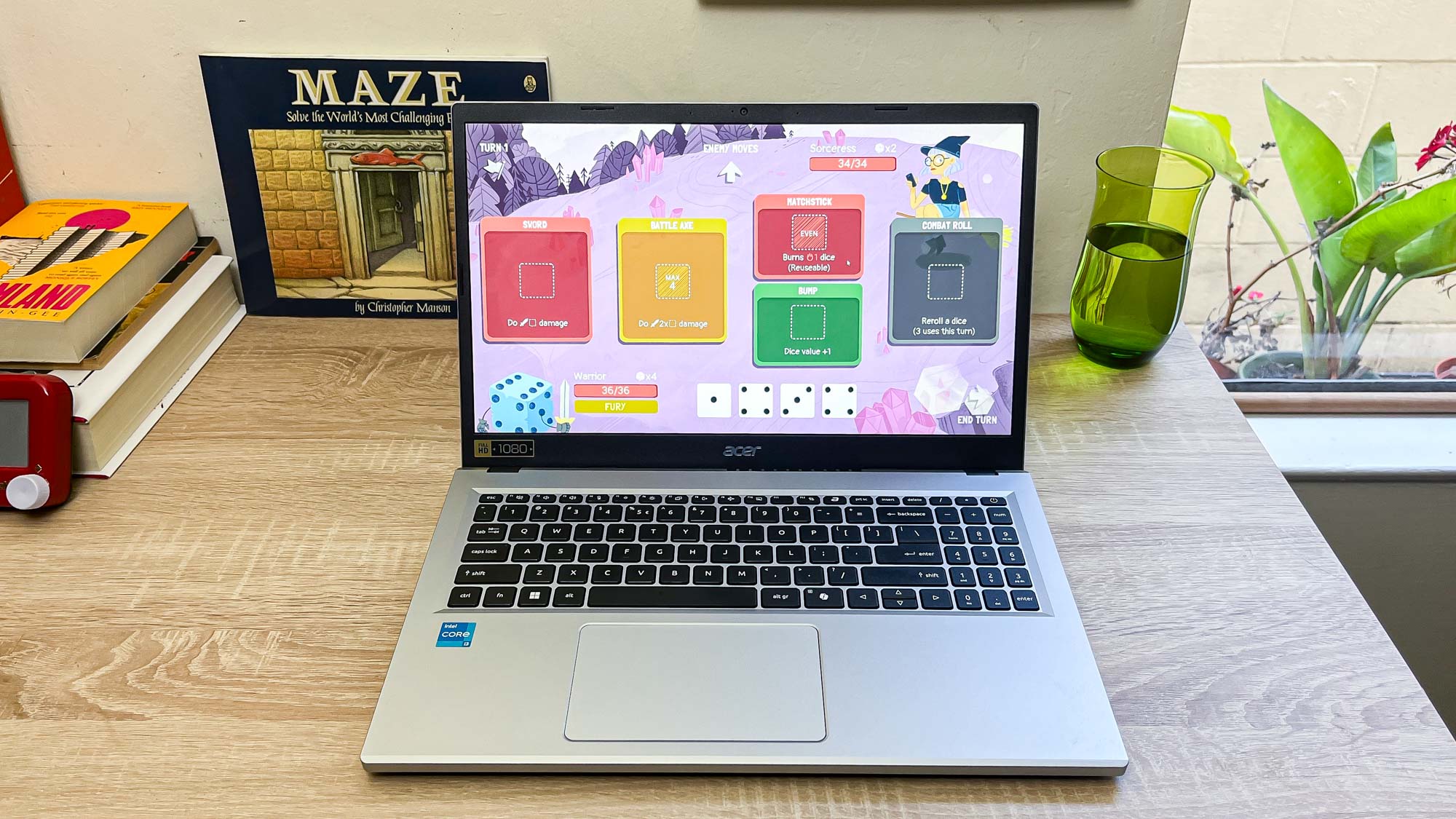
Specifications
Reasons to buy
Reasons to avoid
One thing I like about Windows laptops is that you can get a really useful PC for not too much money. This helps Windows laptops stand out from MacBooks, and gives you more leeway to get a great value.
Case in point: Acer's Aspire Go 15 isn't an amazing laptop, but it doesn't have to be when the asking price is $300. At that price, you can make peace with the fact that the Go 15's low-powered CPU and paltry complement of 8GB RAM and 128GB of storage aren't good for much else besides browsing the web, writing and editing, and maybe some very light gaming.
But that's fine for folks who just need a cheap laptop to browse the web or write emails. What the Acer Aspire Go 15 lacks in features or charm it more than makes up for in utility, as it offers 10 hours of (tested) battery life and a keyboard that's surprisingly comfy to type on.
And while I think its 15.6-inch 1080p screen looks a bit washed-out and won't make colors pop, it's more than good enough for web surfing or working with documents.
The Acer Aspire Go 15 doesn't look, feel or sound as fancy as the other laptops on this list, but it's a serviceable workhorse with a $299 price tag, making it the best Windows laptop for those on a budget and looking for great value.
Read our full Acer Aspire Go 15 review.
The best 2-in-1
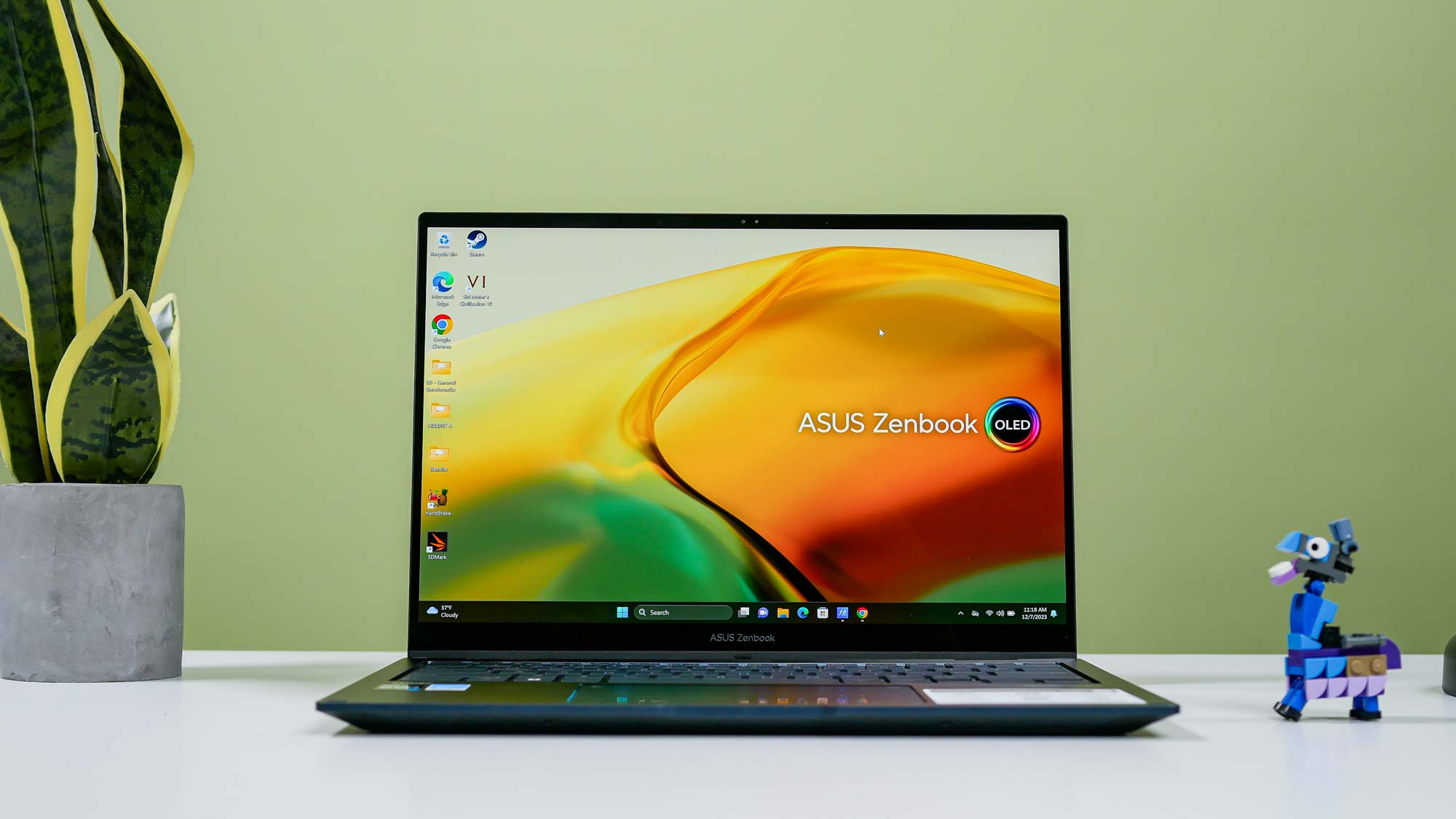

Specifications
Reasons to buy
Reasons to avoid
One of the things that's great about Windows laptops is that you can get a lot of 2-in-1 designs that allow you to flip the touchscreen over, turning the laptop into something resembling a giant Windows 11 tablet.
This gives you a lot of versatility, and one of my favorites is the Asus Zenbook 14 Flip OLED. Sure, the 720p webcam is disappointing and the laptop managed under ten hours in our battery test, putting it behind best MacBooks in terms of power efficiency. But if you can live with those drawbacks, you get a lot of great stuff in this Windows 11 2-in-1.
For instance, I think the beautiful 2.8K OLED screen makes whatever you do on it look nice, and the keyboard is comfy and nice to use. I found performance is plenty fast, and when you factor in the svelte and beautiful chassis sporting plenty of ports you start to see why this affordable 2-in-1 is a compelling value.
That's why I think if you’re in the market for a dependable 2-in-1 with a svelte design and eye-pleasing OLED panel, this is a great laptop to get!
Read our full Asus Zenbook 14 Flip OLED review.
The best dual-screen 2-in-1
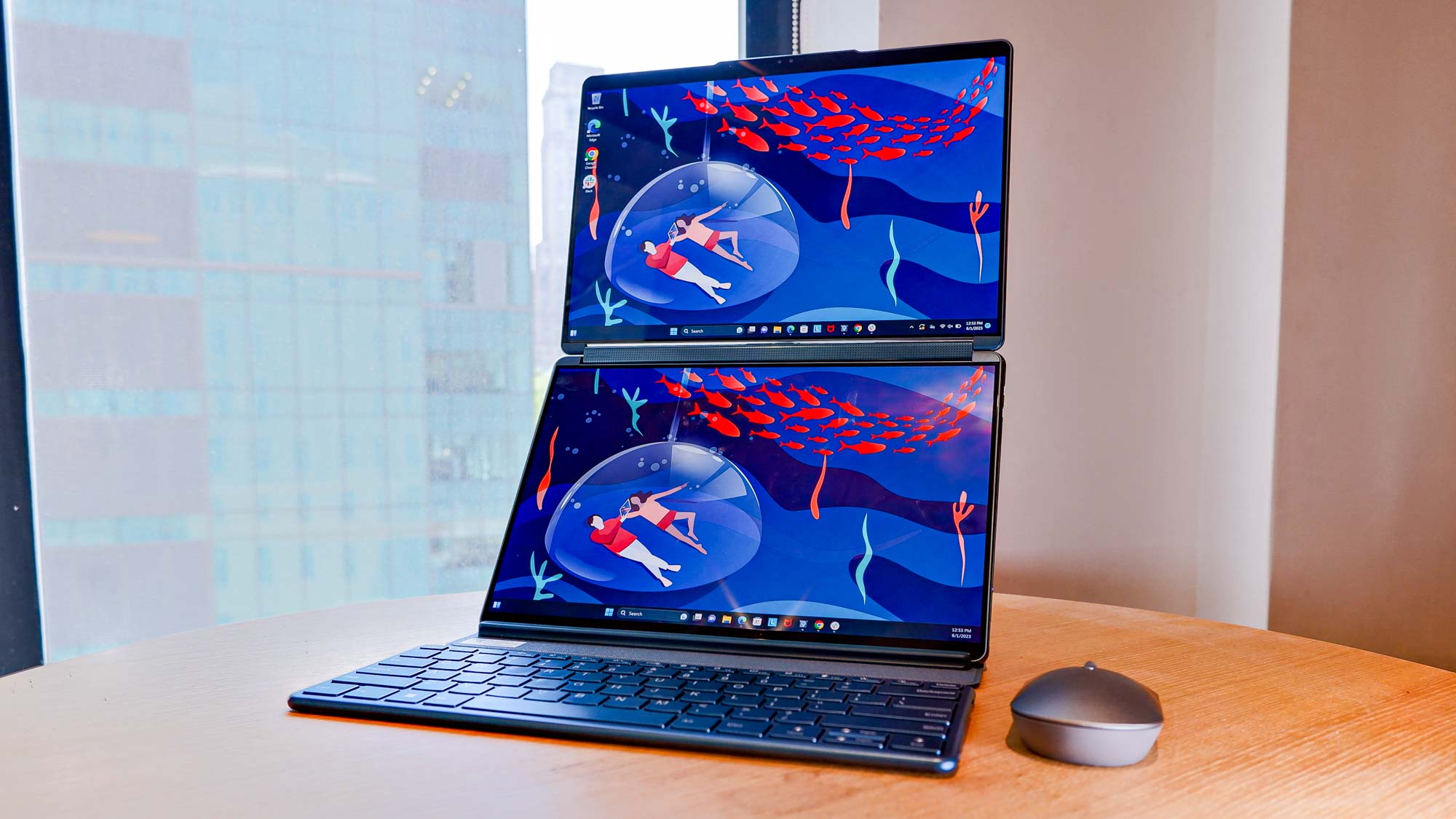

Specifications
Reasons to buy
Reasons to avoid
I know, this laptop looks wild in photos. But once you get the hang of using it, I think there's a lot to recommend it.
See, the Lenovo Yoga Book 9i unites a pair of beautiful 13.3-inch OLED displays in one device, delivering you a unique laptop that can turn into a variety of unique-looking configurations to fit your needs. This laptop can stand in as a traditional Windows 11 laptop or tablet, plus it can go into tent mode for presentations.
While the design itself can feel a little flimsy and less than sturdy, when you get the hang of using it you may appreciate how versatile and useful this two-screen machine be. Type right on one display or use the separate Bluetooth keyboard to bang out emails on your lap in one screen while you watch movies on the other, and you'll start to appreciate how this laptop starts to feel like a Swiss Army knife.
Though it’s expensive for what you get, this oddball laptop offers enough singular value to be included in this list. If you're the kind of person who absolutely can't work without two screens, this is a great option for getting things done on the go.
Read our full Lenovo Yoga 9i review.
The best gaming laptop
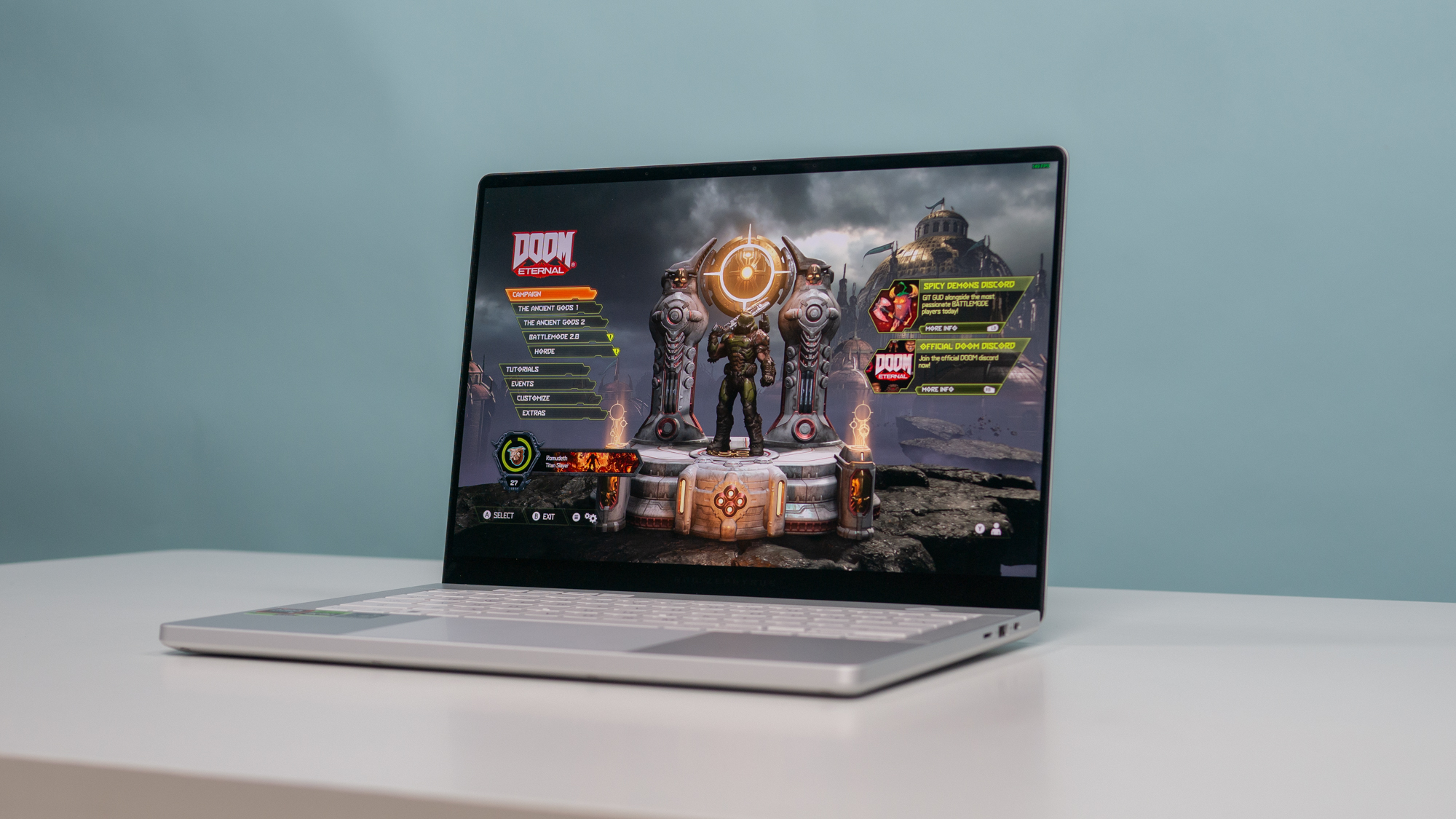

Specifications
Reasons to buy
Reasons to avoid
The Asus ROG Zephyrus G14 has been one of my favorite gaming laptops for a long time, and I think the latest model is better than ever thanks to its 3K OLED display.
I like the G14 because it doesn't look so much like a typical gaming laptop, encased as it is in a slick 14-inch ultraportable chassis that has plenty of ports and looks good on a desk.
Sadly, the laptop lasted under 7 hours surfing the web in our battery test and just over an hour while gaming, so it's not got great battery life. But that's to be expected with gaming laptops, and as long as you keep it plugged in while gaming this machine is a lovely little workhorse.
The Nvidia GeForce RTX 4070 laptop GPU in our review unit gives it more than enough muscle to play the latest games well, especially if you rely on Nvidia's DLSS upscaling tech, making this the best gaming laptop we recommend most.
Read our full Asus ROG Zephryus G14 review.
The best laptop for creators
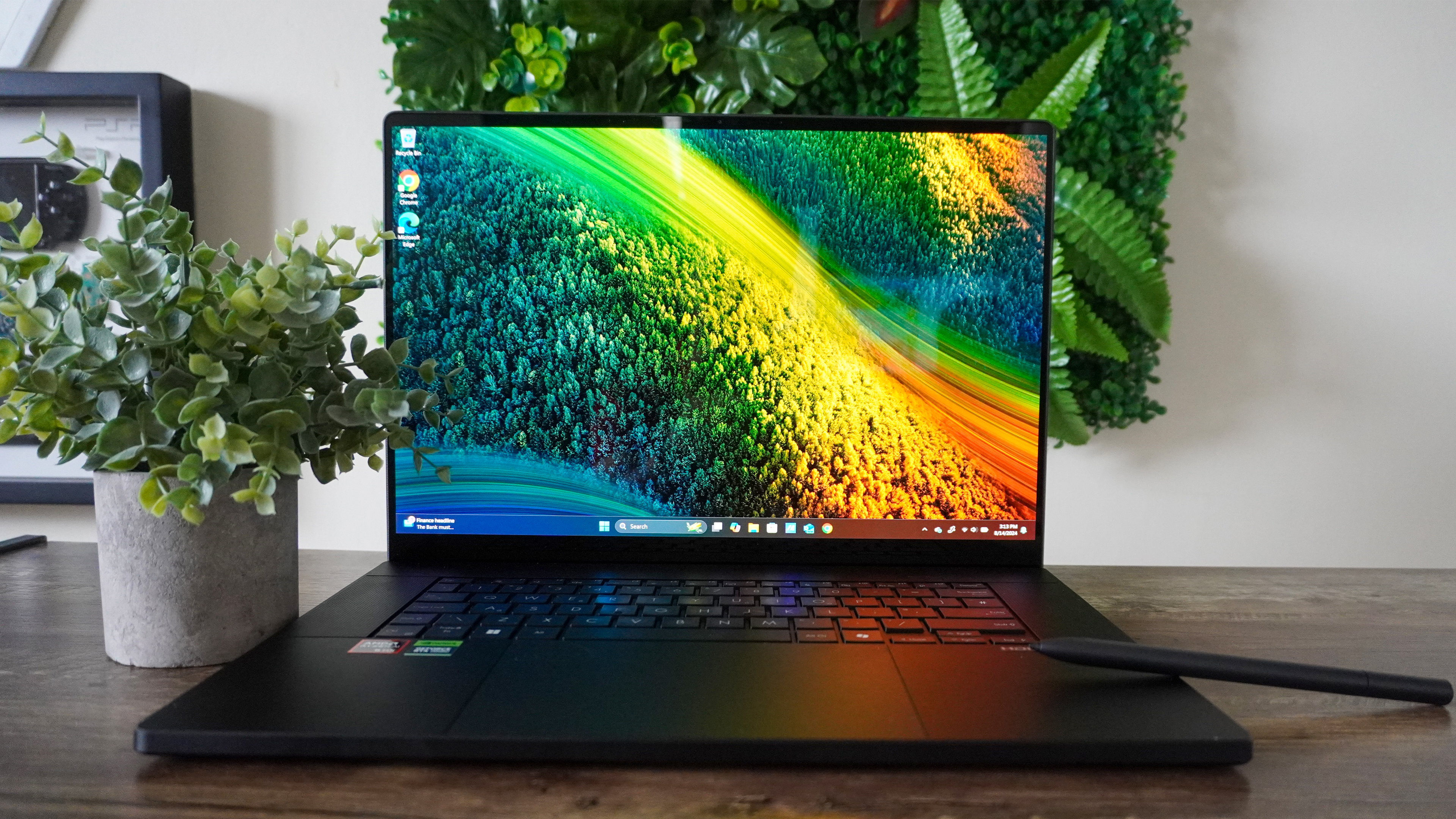
Specifications
Reasons to buy
Reasons to avoid
When our own Jason England tried out the Asus ProArt P16 for review he was blown away by the sleek, attractive design and eye-catching 4K OLED display. If you want a Windows laptop as attractive and powerful as a MacBook Pro, this is the creator laptop I recommend most often.
The reason? This mean-looking matte black aluminum beast has power to spare and evinces some thoughtful attention to the ergonomics — including a stellar keyboard and touchpad, alongside a DialPad for finite creative control over your projects.
But it all comes together with the display and internals you need for even the most power-hungry workflows. The 4K OLED touchscreen is color calibrated for peak accuracy and confidence in the hues of your work, and that AMD Ryzen AI 9 HX 370 + RTX 4070 combo tears through any intense processing in record time.
Admittedly, battery life suffers because of it, but if you’re looking for the best laptop to create great content, this is the I recommend you buy.
Read our full Asus ProArt P16 review.
The best OLED Windows laptop
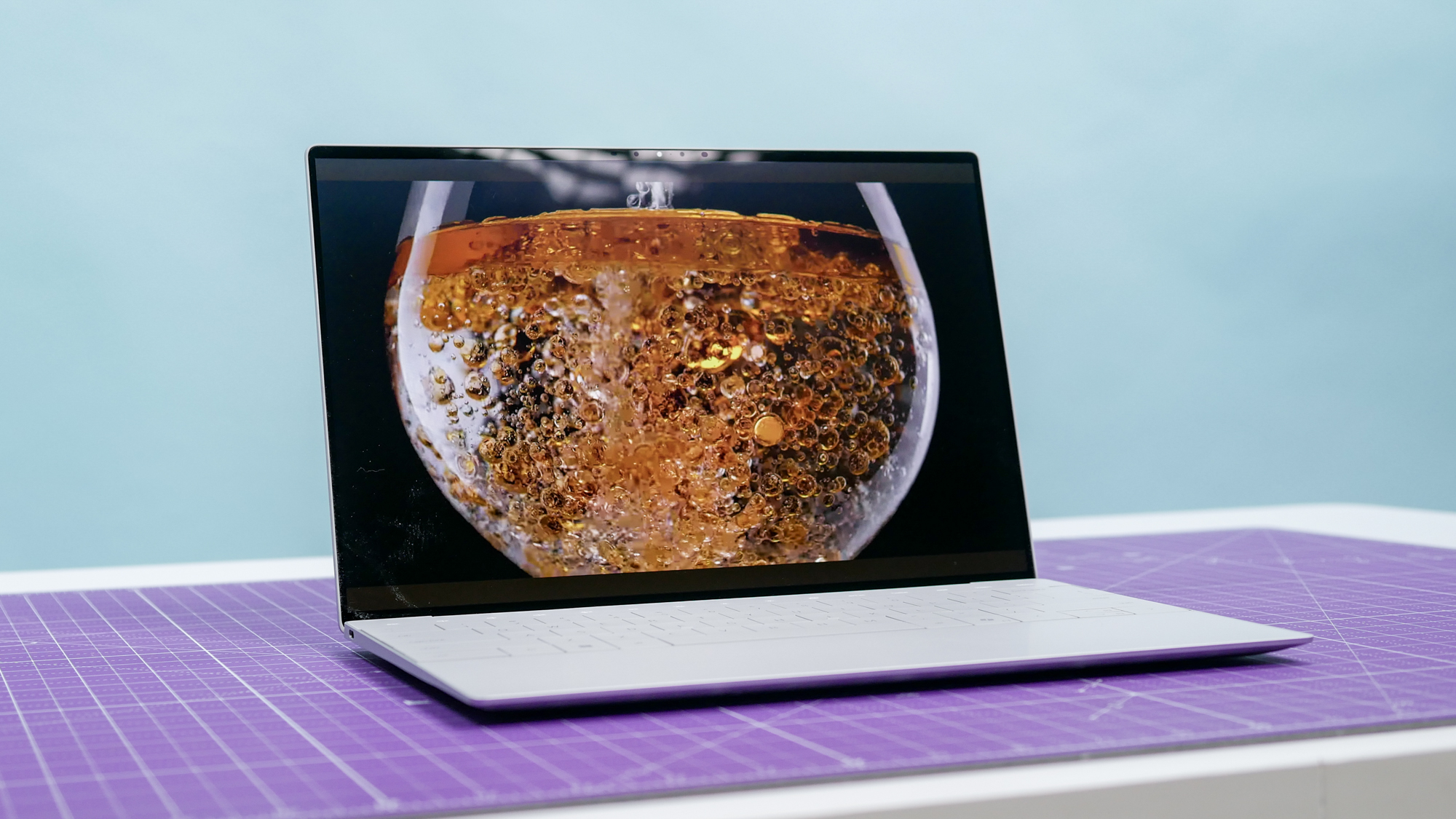
Specifications
Reasons to buy
Reasons to avoid
I know what you're thinking: didn't we just talk about the XPS 13?
We did, but I like this model better than the Snapdragon one at the top of this list when display quality matters. Though other laptops have better performance and battery life, the Dell XPS 13 with a tandem OLED display is the notebook to get if you want the best possible viewing experience on a notebook.
This model features a 13.4-inch tandem OLED display, which we first saw on the iPad Pro M4. The sharp 2,880 x 1,800 resolution allows you to see everything in vivid detail. The OLED tech delivers masterful contrasts between dark and light elements that help images pop off the screen. Though the refresh rate tops out at 60Hz, everything runs smoothly.
The Intel Core Ultra 7 200v “Lunar Lake” chip driving this laptop can deftly handle most everyday tasks like word processing, streaming videos, web surfing and browser-based games. In our testing, Lunar Lake didn’t score as well as other processors like Snapdragon X Elite or Apple M3, which could be a problem if you want to use this Dell XPS 13 for video editing. But if you mostly use a laptop for work and watching videos, you won’t notice any performance issues.
Battery life is one of this laptop’s biggest flaws. It lasts just under nine hours in our testing, which isn’t anywhere close to the 15 or 20 hours we’ve clocked on laptops running M3 or X Elite chips (respectively). The Dell XPS 13 also sports the controversial design of the entire 2024 XPS lineup—meaning this laptop doesn’t feature a physical function row or a visible touchpad. You might also find the tightly packed keys difficult to type on if you have large hands.
While this Dell XPS 13 won’t blow you away with its performance or battery life, its stunning OLED panel makes up for those flaws if you value a laptop’s display above all.
Read our full Dell XPS 13 (Lunar Lake) review.
The best Windows business laptop
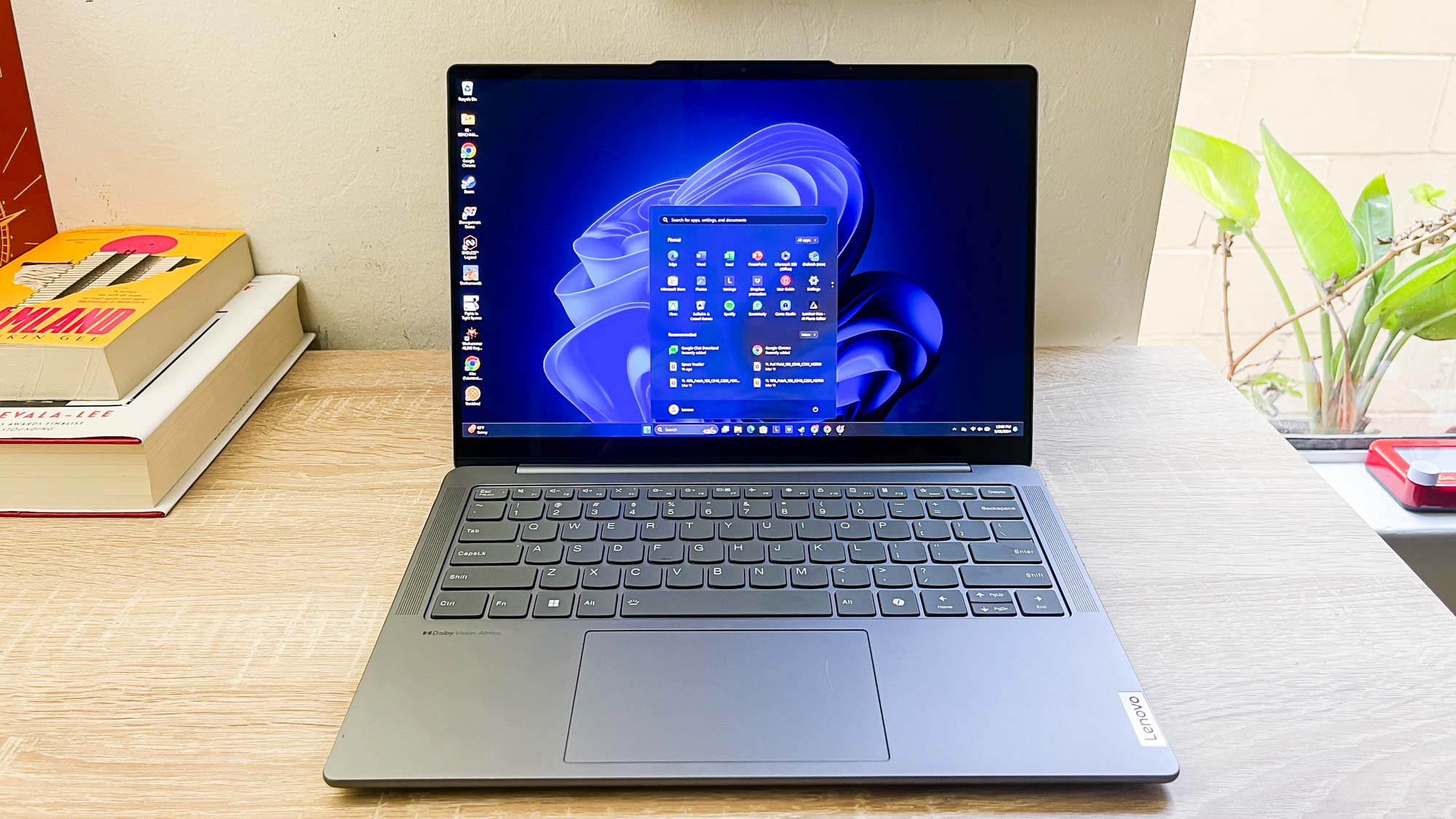

Specifications
Reasons to buy
Reasons to avoid
I'm fond of the Lenovo Slim 7, and I often recommend it as the best Windows business laptop because its easy to carry, comfy to type on and offers good performance and battery life (10+ hours tested).
This is a great laptop for folks who need something that can do double duty as a personal and work laptop. While it's not powerful enough to play serious games or do demanding editing work, it's more than speedy enough for writing, doing homework, putting together presentations and tackling remote coursework.
The upside is that while you don't get a ton of power, you get some nice creature comforts that make using this laptop a delight. I really love the 14-inch OLED touchscreen, which makes everything you do on the device look lovely. Plus, the touchscreen functionality gives you the option of taking your hands off the keyboard and trackpad to tap and swipe when you feel like it.
The keyboard also feels better than most beneath my fingers, thanks to the generous spacing between keys and the subtle indents on each that help your fingers rest comfortably.
The downside is that the power cable is awfully short, which means you may have a tricky time plugging into an outlet in crowded meeting rooms or coffee shops. The fact that the power button is on the side of the laptop is also frustrating, since it caused me to occasionally power the thing off or put it into sleep mode when I was just trying to plug something in.
But overall, this is a great ultraportable that's the best Windows laptop for business use I've ever reviewed. The model I reviewed is sold at Costco so it's a great deal, but if you can't find it at Costco or don't have a membership Lenovo sells very similar models at Amazon and Best Buy.
Read our full Lenovo Slim 7 review.
The best Samsung Windows laptop
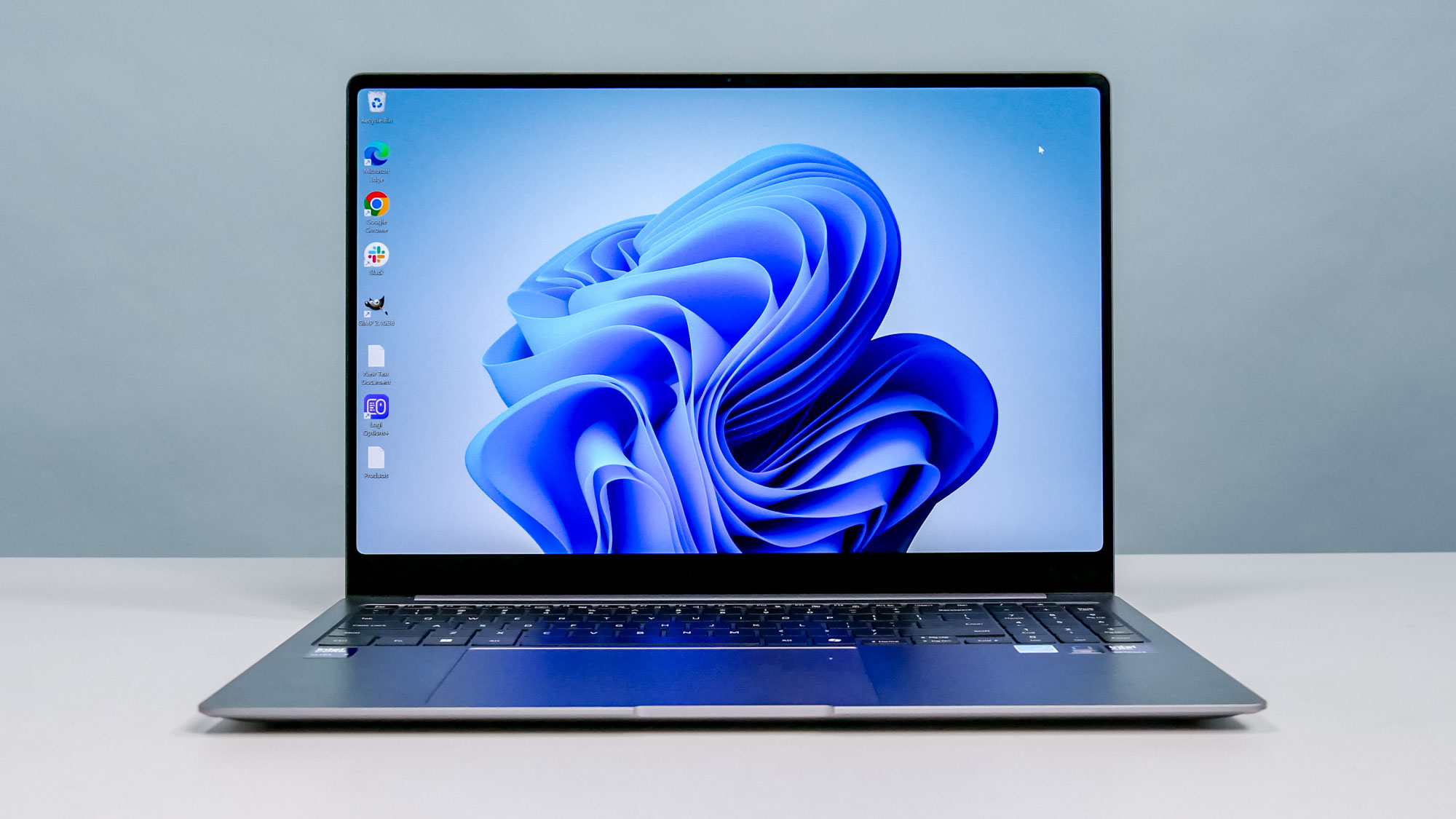
Specifications
Reasons to buy
Reasons to avoid
The Samsung Galaxy Book 5 Pro has everything we love about the company's laptops. This includes a slim design, beautiful OLED display and a fantastic keyboard. This models packs the latest Intel Core Ultra 7 "Lunar Lake" chip, which gives it enough power for everyday work and even light gaming. And if you're into AI, this laptop comes with Copilot+ built-in.
The star of the show is the 16-inch (2880 x 1800) OLED display. It delivers vibrant image quality, making movies and shows look stunning. It also gets decently bright with both SDR and HDR content, further ensuring you can see even the smallest details in videos and websites.
The lightweight and thin design makes this an excellent travel partner. Not only is it easy to carry around, it’s also stylish thanks to its dark gray color and all-around minimalist aesthetic. It also has a decent amount of ports, including a USB-A port for legacy devices.
The Intel Core Ultra 7 chip is powerful enough for watching videos, browsing the web and getting work done. That said, competitors with Snapdragon X Elite inside have better performance and battery life. The Galaxy Book 5 Pro’s AI capabilities work well for translating videos or generating images in Microsoft Paint, but this likely won't be a selling point for most folks.
Though Copilot+ PCs with Snapdragon X Elite have better performance and energy efficiency, Lunar Lake laptops like the Galaxy Book 5 Pro have greater compatibility with apps and programs than Qualcomm’s notebook chips. Add the beautiful OLED display and portability, and the Galaxy Book 5 Pro is arguably the best Samsung Windows laptop right now.
Find our full Samsung Galaxy Book 5 Pro review.
Also tested
I really like the Microsoft Surface Laptop Studio 2 because it has a unique sliding 14.4-inch (2400x1600) 120Hz touchscreen that you can "tent" over the keyboard like an easel for easier sketching, note-taking or movie-watching. It has enough power for work and gaming too if you upgrade to a model with a discrete Nvidia GPU onboard, but the aging 13th Gen Intel CPU means it's no longer as fast or as long-lasting as the top picks on this list.
LG Gram 17 Pro: was $2,199 now $1,599 @ Amazon
The LG Gram 17 Pro (2023) is a powerful ultraportable with decent battery life that remains deceptively light despite packing a discrete Nvidia GPU. While some competitors outpace it, it's hard to beat this svelte black 17-incher's blend of performance and portability.
Microsoft Surface Laptop 7: $999 @ Best Buy
While not a perfect laptop, Microsoft has harnessed the power of Qualcomm’s latest chips to create a true MacBook Air competitor that is speedy and pleasant to use. This configuration packs a Snapdragon X Plus chip, 256GB of storage and 16GB of RAM
Performance test results compared
CPU speed isn't everything, but putting a number on it can go a long way towards helping you understand exactly how fast a laptop is in relation to the rest of the options available to you.
We test every laptop we review in a number of areas, including CPU performance, so I've taken the liberty of putting together a quick chart here of all the performance scores from the laptops on this list so you can compare them at a glance.
We use Geekbench for these tests, as it assigns each laptop a score for its performance in single-core workloads and multi-core workloads. The single-core score is often a little more meaningful because not all apps are optimized for multi-core performance, but many are so its good to consider multi-core performance as well.
Laptop | Single-core | Multi-core |
Dell XPS 13 (2024) | 2797 | 14635 |
Acer Aspire Go 15 | 1310 | 5209 |
Asus Zenbook 14 Flip OLED | 2524 | 10540 |
Framework Laptop | 2362 | 12195 |
Lenovo Yoga Book 9i | 2317 | 8887 |
Asus ROG Zephyrus G14 | 2614 | 12246 |
Lenovo Slim 7 | 2432 | 12111 |
Asus ProArt P16 | 2872 | 15286 |
Samsung Galaxy Book 4 Ultra | 2426 | 13061 |
LG Gram 17 Pro | N/A | N/A |
Microsoft Surface Laptop 7 | 2809 | 14426 |
Battery benchmarks: comparison
Battery life is one of the key things you should look at when deciding which laptop to buy, which is why we run every laptop we review through a series of battery tests to see how long it lasts on a full charge.
These tests do not reflect real-world use patterns since we have to set every laptop to the same settings in order to do fair comparisons. Thus, while the times listed here are accurate and useful as a comparison point, your own experience with a laptop's battery life will likely vary.
This is because when we run our battery test we set the laptop's display to 150 nits of brightness and have it endlessly browse the web via Wi-Fi until it dies. However, when you use your laptop you're likely adjusting brightness on the fly, doing all sorts of different tasks while perhaps listening to music or watching a video at the same time, and generally putting the machine through more of a workout than it gets in our test.
So while I stand by our testing and the battery life results we compare in the chart below, I want to be clear that your own experience will vary!
Laptop | Battery life (tested) |
Dell XPS 13 (2024) | 19:41 |
Acer Aspire Go 15 | 10:15 |
Lenovo Slim 7 | 10:10 |
Asus Zenbook 14 Flip OLED | 8:24 |
Lenovo Yoga Book 9i | 9:18 (two displays) | 12:13 (one display) |
Framework Laptop | 10:17 |
Asus ROG Zephyrus G14 | 11:15 |
Asus ProArt P16 | 9:32 |
Samsung Galaxy Book 4 Ultra | 13:19 |
LG Gram 17 Pro | 12:02 |
Microsoft Surface Laptop 7 | 15:44 |
How to choose the best laptop for you
How to choose the best Windows laptop for you
Performance: If performance isn't important to you, say because you only need a laptop for browsing the web, you can save a lot of money by choosing a cheap Windows laptop with an Intel Core i3 processor or weaker and 4-8 GB of RAM, like the Acer Aspire Go 15. But if speed and performance are important to you, pick a laptop with starting specs such as a better CPU, 8-16 GB of RAM and at least a 512GB SSD, like the XPS 13.
Size: Consider how mobile you want your Windows machine to be. Notebooks like the Dell XPS 13 are incredibly light and slim, while gaming-focused laptops like the Asus ROG Zephyrus G14 have real heft to them but offer real power in exchange.
Flexibility: The 2-in-1 category of Windows laptop is a relatively new but exciting market of devices with hinges capable of rotating all the way around to lay the screen flat on the back of the laptop, turning it into a Windows tablet. If the idea of having a laptop that doubles as a tablet is exciting to you, Windows notebooks like the Lenovo Yoga 9i are a great choice.
Graphics and gaming: Most Windows laptops feature integrated graphics as part of the CPU, which means they can handle old or undemanding games like Minecraft or World of Warcraft, but they won't be great at running the latest games or any intensive graphics applications (think: photo and video editing). For that, you'll want a laptop with a discrete graphics card, like the Asus ROG Zephyrus G14.
Whatever system you choose, it's always a good idea to complement it by investing in the best mouse for your particular work situation.
How we tested these laptops
How we test to find the best Windows laptops
In order to determine which laptops deserve to be counted among the best Windows laptops we run every machine we review through a rigorous suite of benchmarks and real-world tests to gauge how it will perform during everyday use.
These tests cover the speed and capabilities of the laptop, as well as its display capabilities. We carefully measure the average brightness and color quality of each laptop's display using our in-house Klein K10-A light meter and colorimeter.
To evaluate overall performance we then run our machines through tests that include Geekbench 6 (CPU performance), as well as various AI-focused tests and some 3DMark tests to measure graphics capabilities. We also run our own custom file transfer test to measure how fast a machine's hard drive is, and a custom battery test that has the machine browse the internet over Wi-Fi until it runs out of juice.
When testing all laptops we benchmark gaming performance running Sid Meier's Civilization VI: Gathering Storm. For testing dedicated gaming laptops, we also run benchmarks for a number of other popular games, such as Cyberpunk 2077 and Red Dead Redemption 2.
All of these lab tests are complemented by our hands-on review process, in which reviewers spend time putting each laptop through its paces while working, watching movies, listening to music, and playing games.
For more information on our testing process, check out our guide to how we test products at Tom's Guide.
Sign up to get the BEST of Tom's Guide direct to your inbox.
Get instant access to breaking news, the hottest reviews, great deals and helpful tips.

Tony is a computing writer at Tom’s Guide covering laptops, tablets, Windows, and iOS. During his off-hours, Tony enjoys reading comic books, playing video games, reading speculative fiction novels, and spending too much time on X/Twitter. His non-nerdy pursuits involve attending Hard Rock/Heavy Metal concerts and going to NYC bars with friends and colleagues. His work has appeared in publications such as Laptop Mag, PC Mag, and various independent gaming sites.
- Alex WawroSenior Editor Computing
